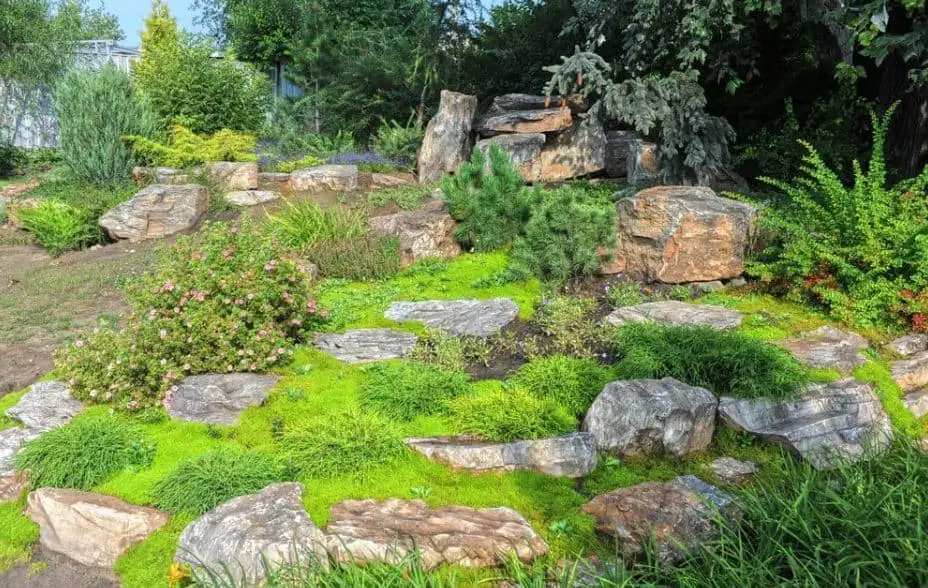Americans adore their lawns. Turf grass is by far the most common “crop” we plant and water, although it neither produces food nor a living. Homeowners are using alternatives to lawns because of these and other factors. Many natural warm-season grasses and plants have been used successfully by gardeners in Texas, Arkansas, and other southern states.

Why Use Alternatives to Lawns
Many homeowners are moving to more sustainable native flora to fill their yards rather than cultivating a monoculture lawn of bluegrass or fescue. These may include non-mowing, low-growing grasses or groundcovers. Another option is to maintain a prairie-style garden with taller plants that ripple in the wind.
Here are the main arguments for a natural southern or Texas lawn over a monoculture of bluegrass for the environment:
Alternatives to lawns require less fossil fuel. The principal fuels used to power lawn care equipment, gasoline, and diesel, are derived from non-renewable crude oil. Americans consume 800 million gallons of petroleum annually to maintain lush lawns.
Pollinator deserts are traditional lawns. Traditional lawns are monocultures that don’t support the many pollinator species that live in the natural environment. Without food, these necessary insect populations dwindle, reducing biodiversity.
Irrigating the grass is necessary to keep it green. Traditional turf grass requires roughly 25,000 gallons of water annually to be healthy and green during the growing season.
The cost of maintaining turf grass is high. Annually, Americans invest between 30 and 35 billion dollars in lawn care. Additionally, the fertilizers and herbicides used to keep a monoculture lawn in good condition may cause harmful runoff that contaminates lakes, streams, and rivers.
Lawn substitutes in Arkansas, Texas, and other southern states
One benefit of converting to a grass alternative is that homeowners don’t have to change their whole yard at once. You may keep up a grassy recreational space for humans and animals.
Under trees and shaded or low-traffic parts of the yard are ideal places to start when looking for grass substitutes. A few low-growing, herbaceous plants that may be used in place of grass are listed below:
Amblyolepis setigera, the Huisache daisy, is a native of Texas. Its 1 to 2-inch (2.5–5 cm) yellow blooms are alluring to bees and butterflies.
The name “winecup” (Callirhoe involucrata) comes from the purple, cup-shaped blooms that this mat-forming, low-growing perennial bears. Within USDA zones 4 through 8, winecups are hardy.
Dichondra argentea, commonly known as silver ponyfoot, grows to a height of 4 inches (10 centimeters) and is sun- and shade-tolerant, making it suitable for arid environments in USDA zones 8 to 10.
Alternatives to Native Grass Lawns: Gardens in Kansas and the South
The yard’s sunny and shaded regions benefit from warm-season, natural grasses. While some grassland plants, like Buffalograss (Buchloe dactyloides), grow slowly, others may reach considerable heights. For the latter, consider hardscaping components like benches and stone pathways. This offers spaces to stroll, relax, and take in the garden.
For lawns and gardens, switching to a variety of native Texas grasses results in lovely landscaping that doesn’t need mowing:
- Big bluestem (Andropogon gerardii)
- Indiangrass (Sorghastrum nutans)
- Little bluestem (Schizachyrium scoparium)
- Purple top (Tridens flavus)
- Sideoats grama (Bouteloua curtipendula)
Last, but not least, think about switching out your standard grass lawn with local sedges (Carex spp.). These plants are closely related to grass and feature triangular stems and blade-like leaves. Sedge lawns need less mowing than conventional grass turf, just two to three times a year. The following sedge species, out of the more than 2,000 varieties, have shown the most potential as grass replacements for southern lawns:
- Cedar sedge (Carex planostachys)
- Creek sedge (Carex amphibola)
- Leavenworth’s sedge (Carex leavenworthii)
- Palm sedge (Carex muskingumensis)
- Texas sedge (Carex texensis)

